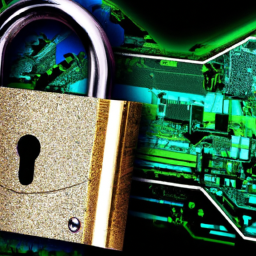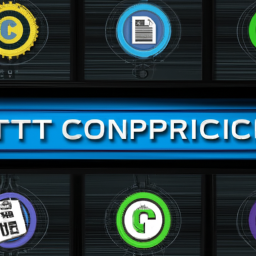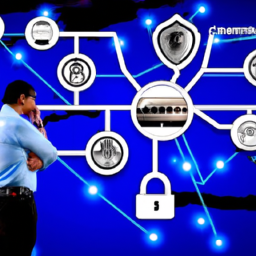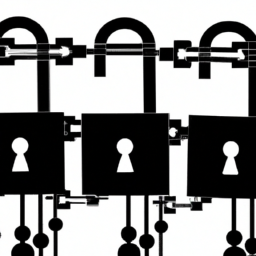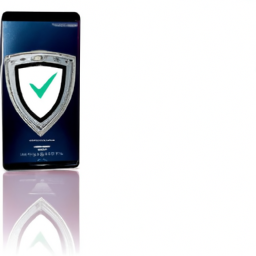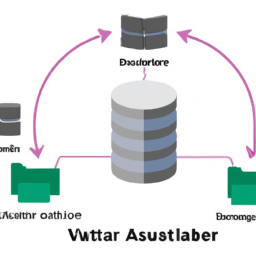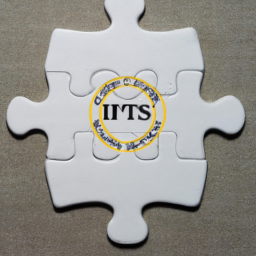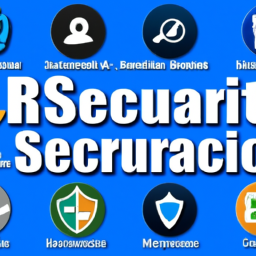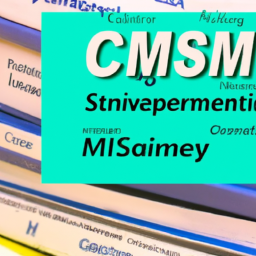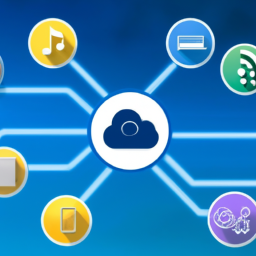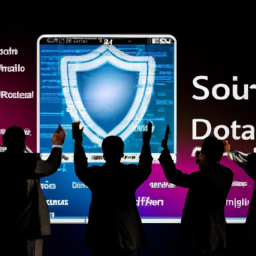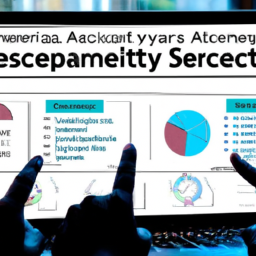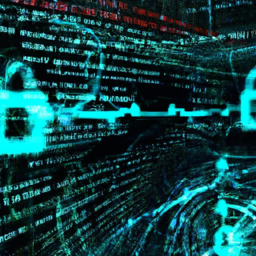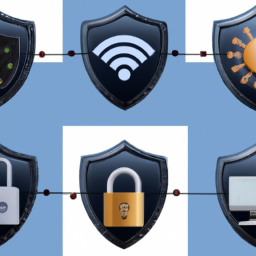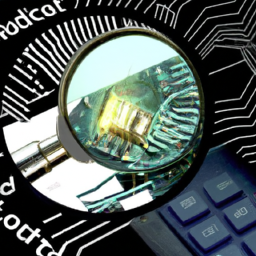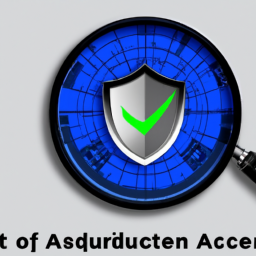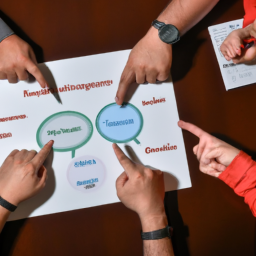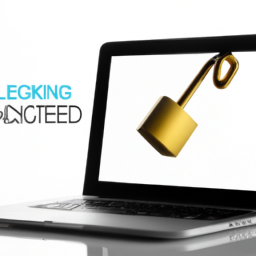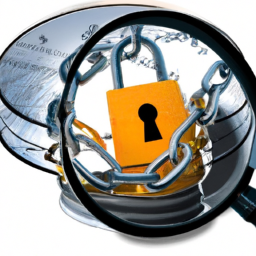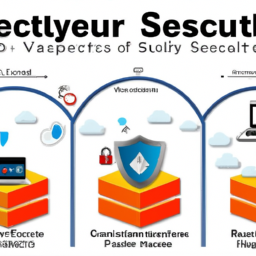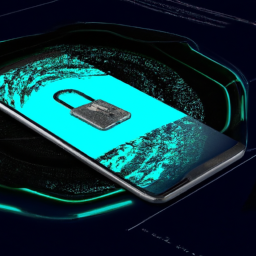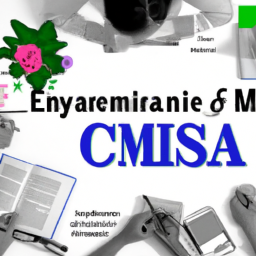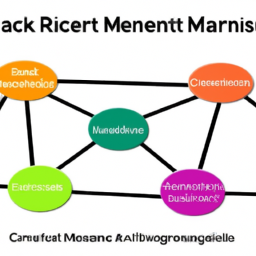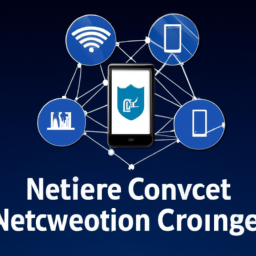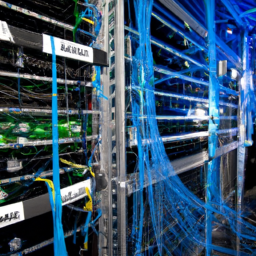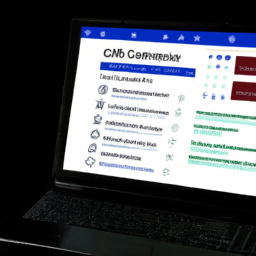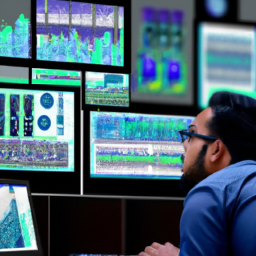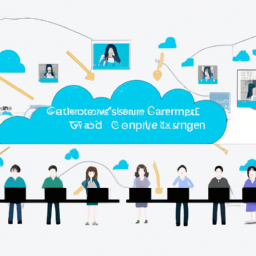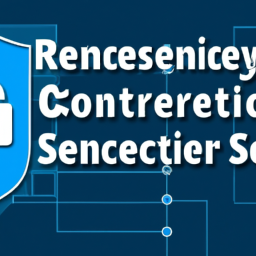Have you ever wondered how cybercriminals are able to breach even the most secure systems? It’s no coincidence that they possess a wide range of skills and knowledge in the field of cybersecurity. To combat these threats effectively, cybersecurity professionals must equip themselves with essential skills that are crucial in safeguarding digital assets.
In this comprehensive guide, we will delve into the intricacies of cybersecurity and explore the techniques and tools used by cybercriminals. By understanding their methods, you will gain insights into the vital skills required to protect networks and systems. From proficiency in network security and knowledge of operating systems to expertise in cryptography and encryption, we will explore the fundamental skills that form the foundation of a successful cybersecurity career.
Additionally, we will highlight the importance of incident response and forensics, as well as the necessity for continuous learning and professional development in this ever-evolving landscape.
Prepare to delve into the world of cybersecurity and equip yourself with the essential skills needed to combat cyber threats head-on.
Key Takeaways
- Cybersecurity professionals need to possess essential skills to protect digital assets.
- Understanding cyber threats and attack techniques is crucial for protection.
- Proficiency in network security is important for safeguarding information and defending against threats.
- Knowledge of operating systems and software security helps identify vulnerabilities and secure endpoints.
Understanding Cyber Threats and Attack Techniques
You need to understand cyber threats and attack techniques to protect yourself and your loved ones from the ever-present dangers of the digital world.
The cyber threat landscape is constantly evolving, with new types of threats emerging every day. To effectively defend against these threats, you must have a deep understanding of the common attack vectors used by hackers.
This includes familiarizing yourself with methods such as phishing, malware, social engineering, and denial of service attacks. By knowing how these attacks work and the techniques used to carry them out, you can better anticipate and prevent them.
Once you have a solid grasp of cyber threats and attack techniques, you can move on to the next section about proficiency in network security, where you’ll learn how to protect and secure your network effectively.
Proficiency in Network Security
Mastering network security is crucial for any cybersecurity expert, as it allows you to safeguard sensitive information and defend against potential threats. To ensure the security of a network, it’s essential to follow network security best practices and implement a secure network architecture.
This involves designing a network that is resilient and can withstand attacks, as well as regularly monitoring and analyzing network traffic for any signs of intrusion or malicious activity.
Network security best practices include implementing strong authentication mechanisms, such as multi-factor authentication, to prevent unauthorized access. It’s also important to regularly update and patch network devices and software to address any vulnerabilities.
Additionally, segmenting the network into different zones and controlling access to resources using firewalls and access control lists can help limit the impact of a potential breach.
By mastering network security, you’ll be equipped with the skills and knowledge needed to protect against network-based attacks. This will allow you to seamlessly transition into the subsequent section about knowledge of operating systems and software security, where you’ll learn about securing endpoints and identifying vulnerabilities.
Knowledge of Operating Systems and Software Security
To effectively navigate the world of operating systems and software security, it’s crucial that you understand the security risks associated with different operating systems. By familiarizing yourself with the vulnerabilities specific to each system, you can better protect against potential threats.
Additionally, learning about software vulnerabilities and patch management is essential for maintaining robust security measures. By staying informed on the latest vulnerabilities and regularly implementing patches, you can ensure that your systems are protected from potential exploits.
Lastly, implementing secure software development practices is vital. By adhering to industry standards and best practices, you can create software that’s inherently more secure, reducing the risk of potential vulnerabilities.
Understand the Security Risks of Different Operating Systems
When understanding the security risks of different operating systems, it is crucial to identify the potential vulnerabilities that can be exploited by cybercriminals. Different operating systems have their own unique set of security risks, which can vary depending on factors such as the architecture, design, and popularity of the operating system. For example, cloud computing introduces security risks related to data privacy and control, while mobile devices face challenges such as app vulnerabilities and device theft. To better understand these risks, refer to the table below:
| Operating System | Security Risks |
|---|---|
| Windows | Malware attacks, software vulnerabilities |
| macOS | Phishing attacks, weak encryption |
| Linux | Privilege escalation, open source vulnerabilities |
| Android | Malicious apps, device fragmentation |
By understanding the security risks associated with different operating systems, cybersecurity professionals can develop effective strategies to protect systems and networks from potential threats. In the next section, you will learn about software vulnerabilities and patch management.
Learn about Software Vulnerabilities and Patch Management
Understanding software vulnerabilities and the importance of patch management is like having a shield to protect your systems from potential cyber attacks. To effectively manage software vulnerabilities, you need to implement proper patch deployment strategies. Here are four key aspects to consider:
-
Vulnerability Assessment: Conduct regular vulnerability assessments to identify weaknesses in your software systems.
-
Prioritization: Prioritize vulnerabilities based on their severity and potential impact on your systems.
-
Patch Testing: Thoroughly test patches in a controlled environment before deploying them to production systems.
-
Timely Deployment: Ensure that patches are deployed in a timely manner to minimize the window of opportunity for attackers.
By understanding and implementing software vulnerability management and patch deployment strategies, you can significantly reduce the risk of successful cyber attacks on your systems. This sets the stage for the subsequent section on implementing secure software development practices.
Implement Secure Software Development Practices
Developing secure software is like building a fortified castle, where every brick and stone is meticulously placed to ensure the highest level of protection for your digital kingdom. Implementing secure software development practices is crucial to safeguard against potential vulnerabilities and ensure the integrity of your applications. By following secure coding practices and adhering to a secure software development lifecycle, you can minimize the risk of security breaches and protect sensitive data.
To illustrate the importance of secure software development, consider the following table:
| Secure Coding Practices | Benefits |
|---|---|
| Input validation | Prevents injection attacks and unauthorized access |
| Authentication | Ensures only authorized users can access the system |
| Error handling | Prevents information leakage and system crashes |
By adopting these practices, you can enhance the security of your applications and mitigate potential risks.
As you delve into the next section about expertise in cryptography and encryption, you will further fortify your understanding of cybersecurity and expand your arsenal of protection strategies.
Expertise in Cryptography and Encryption
To excel in the field of cybersecurity, you need to have a deep understanding of cryptography and encryption. This involves grasping the principles of cryptography, which form the foundation for secure communication and data protection.
Additionally, you should familiarize yourself with different encryption algorithms and protocols to effectively implement secure measures. By acquiring expertise in cryptography and encryption, you’ll be equipped with the necessary tools to safeguard sensitive information and thwart potential cyber threats.
Understand the Principles of Cryptography
Cryptographic principles are crucial for cybersecurity professionals as they enable secure communication and data protection. For example, imagine a scenario where a financial institution uses encryption algorithms to ensure that sensitive customer data remains confidential during online transactions.
To understand the principles of cryptography, you need to grasp the following concepts:
-
Principles of encryption: Encryption involves converting plaintext into ciphertext using mathematical algorithms. It ensures that only authorized individuals can access and understand the information.
-
Cryptography techniques: Various techniques, such as symmetric key encryption and public-key encryption, are used to secure data. These techniques involve using keys to encrypt and decrypt information.
-
Security protocols: Implementing security protocols, such as Transport Layer Security (TLS) and Secure Sockets Layer (SSL), is essential for ensuring secure communication over networks.
By understanding the principles of cryptography, you lay the foundation for learning about different encryption algorithms and protocols in the subsequent section.
Learn about Different Encryption Algorithms and Protocols
Learning about different encryption algorithms and protocols is a fascinating journey that unveils the secrets behind protecting sensitive information and ensuring secure communication in the digital world.
Different encryption techniques play a crucial role in safeguarding data from unauthorized access and maintaining confidentiality. Encryption algorithms like Advanced Encryption Standard (AES), Rivest Cipher (RC), and Data Encryption Standard (DES) employ various mathematical operations to transform plaintext into ciphertext. These algorithms provide different levels of security and encryption strength.
Additionally, protocols such as Secure Sockets Layer (SSL) and Transport Layer Security (TLS) ensure secure communication over networks by encrypting data during transmission. Encryption offers several benefits, including data integrity, authentication, and non-repudiation.
Understanding these encryption algorithms and protocols is essential for cybersecurity professionals to implement secure communication and data protection seamlessly.
Transitioning into the subsequent section, let’s now focus on how to implement secure communication and data protection without compromising efficiency.
Implement Secure Communication and Data Protection
Ensure your sensitive information remains safe and protected by implementing secure communication and data protection techniques. Here are four key aspects to consider when it comes to secure communication protocols and data encryption techniques:
-
Transport Layer Security (TLS): Utilize TLS to establish secure connections between systems, ensuring that data remains encrypted during transmission.
-
Virtual Private Networks (VPNs): Implement VPNs to create secure tunnels for data exchange, protecting information from unauthorized access.
-
Public Key Infrastructure (PKI): Utilize PKI to verify the authenticity of digital certificates, ensuring secure communication and data integrity.
-
Secure Sockets Layer (SSL)/Transport Layer Security (TLS) Certificates: Deploy SSL/TLS certificates to encrypt data between the client and server, protecting sensitive information from interception.
By implementing these secure communication protocols and data encryption techniques, you can safeguard your sensitive information from potential threats.
In the subsequent section about incident response and forensics, we’ll explore how to effectively handle security incidents and gather evidence.
Incident Response and Forensics
When it comes to dealing with cyber attacks, incident response and forensics play a critical role in identifying and mitigating the damage caused.
Digital forensics tools are essential in this process, as they allow cybersecurity professionals to collect and analyze evidence from compromised systems. These tools enable the examination of system logs, network traffic, and file metadata to determine the extent of the attack and its impact.
Incident response plan development is another key aspect of this subtopic. Creating a well-defined plan ensures that organizations can effectively respond to incidents, minimizing the time it takes to detect, contain, and eradicate threats.
By integrating incident response and forensics into their cybersecurity strategies, professionals can better protect their systems and data.
This subtopic sets the foundation for the next section, which explores the importance of continuous learning and professional development in the ever-evolving field of cybersecurity.
Continuous Learning and Professional Development
Staying ahead in the ever-evolving field of cybersecurity requires a commitment to continuous learning and professional development, as cyber threats constantly evolve and adapt. To excel in this field, you must embrace continuous learning as a fundamental aspect of your career.
Cybersecurity professionals must constantly update their knowledge and skills to keep up with the latest techniques and tools employed by hackers. This involves staying informed about emerging threats, attending industry conferences, and participating in training programs and workshops.
Engaging in continuous learning not only helps you stay current with the latest trends and technologies, but it also demonstrates your dedication to professional growth. By actively seeking out new knowledge and skills, you can enhance your expertise and position yourself as a valuable asset in the field of cybersecurity.
Frequently Asked Questions
What are the most common cyber threat actors and their motivations?
Hacker groups are the most common cyber threat actors, constantly evolving their techniques and tools to exploit vulnerabilities. Their motivations vary, from financial gain through ransomware attacks to political agendas aimed at causing disruption or stealing sensitive information.
State-sponsored attacks, on the other hand, are driven by governments seeking to gain a strategic advantage, gather intelligence, or disrupt the operations of rival nations.
Understanding these threat actors and their motivations is crucial for effective cybersecurity measures.
How can organizations stay ahead of emerging cyber threats and attack techniques?
To stay ahead of emerging cyber threats and attack techniques, organizations must leverage emerging threat intelligence and implement proactive defense strategies.
For example, let’s consider a hypothetical case study. By continuously monitoring the dark web and other underground forums, organizations can gather valuable intelligence on upcoming threats and vulnerabilities. They can then use this information to proactively patch vulnerabilities, update security measures, and train employees on the latest attack techniques.
This approach ensures organizations are well-prepared to defend against evolving cyber threats.
What are the key principles and best practices for securing network infrastructure?
To secure network infrastructure effectively, you must prioritize network monitoring. This practice is crucial because it allows you to identify and address any potential vulnerabilities or suspicious activities in real-time. By continuously monitoring your network, you can detect unauthorized access attempts, network breaches, and potential insider threats promptly. This enables you to take immediate action and minimize the impact of any security incidents.
Therefore, network monitoring is of utmost importance in maintaining a secure network infrastructure.
What are the main vulnerabilities and security considerations when it comes to operating systems and software?
Operating system vulnerabilities pose a significant risk to your organization’s security. These vulnerabilities can be exploited by malicious actors to gain unauthorized access, execute malicious code, or disrupt system operations. To mitigate these risks, it’s crucial to regularly apply security patches and updates, implement strong access controls, and use secure configurations.
Additionally, software vulnerabilities can expose your systems to attacks. To address this, make sure you have a robust vulnerability management program. Regularly update software and employ secure coding practices.
How does cryptography and encryption play a role in securing sensitive data and communication?
Cryptography and encryption are like the superheroes of data security. They use complex algorithms to transform sensitive information into unreadable code, protecting it from prying eyes.
In this digital age, where data breaches are a common threat, cryptography plays a vital role in securing sensitive data and communication. Public Key Infrastructure (PKI) is the backbone of this security, providing digital certificates and secure key management.
Additionally, Two Factor Authentication adds an extra layer of protection, ensuring that only authorized individuals can access sensitive information.
Conclusion
In conclusion, you’ve embarked on a journey through the labyrinthine world of cybersecurity, equipping yourself with the essential skills necessary to safeguard the digital realm.
Like a skilled locksmith, you’ve mastered the art of network security, operating systems, and software protection.
Your expertise in cryptography and encryption has transformed you into a guardian of secrets, shielding sensitive information from prying eyes.
With the ability to swiftly respond to incidents and unravel the intricate threads of forensics, you’re a cyber detective, tirelessly seeking justice.
Remember, in this ever-evolving field, continuous learning and professional development are the keys to staying one step ahead of the adversaries.




